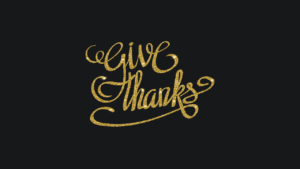A majority of Thanksgiving tables this year are likely to find turkey being served as the main protein; but, the price you paid for your prize bird might have been higher than in years past. The price hike is the result of a North American outbreak of bird flu that claimed the lives of 7.5 million birds earlier this year. While the total number of birds killed by the disease represents less than 5% of the turkeys being raised, Kathleen Pierce (@PierceNews) reports that the shortage resulted in price rises between 20 to 40 cents a pound.[1] The epidemic ended in June but its impact reached all the way to Thanksgiving. Turkey has a long history of being served on Thanksgiving tables. Megan Gambino (@megan_gambino) reports, “The history of the holiday meal tells us that turkey was always the centerpiece, but other courses have since disappeared.”[2] Gambino notes that there are only two short references to the earliest harvest feast celebrated by the pilgrims and Native Americans. One of those accounts was provided by Governor William Bradford who wrote, “And besides waterfowl there was great store of wild turkeys, of which they took many, besides venison, etc. Besides, they had about a peck a meal a week to a person, or now since harvest, Indian corn to that proportion.”
So important was the turkey to early settlers that Benjamin Franklin (tongue firmly in cheek) wrote to his daughter suggesting that it would have made a better symbol for America than the bald eagle.[3] He wrote:
“I am on this account not displeased that the figure is not known as an Eagle, but looks more like a Turkey. For the truth, the Turkey is in comparison a much more respectable bird, and withal a true original native of America… He is besides, though a little vain and silly, a bird of courage, and would not hesitate to attack a grenadier of the British Guards who should presume to invade his farm yard with a red coat on.”
The turkey is so associated with North American Thanksgiving feasts that we think of the bird as fully American. The Economist reports, however, that the turkey has a rich and well-traveled history.[4] “Before tucking in this year,” the magazine states, “spare a thought for the journey made by the big-bodied, bright-plumed and flightless bird that may have landed on your [holiday] table. Wherever this specimen was raised and wherever you are dining, the species has travelled a very long distance to reach you.” It may surprise hunters that the magazine claims the ancestral turkey is extinct in the wild. It explains:
“Before it was domesticated it lived free in Mexico (patriotic Americans may opt to celebrate a few fossilised turds which prove that another strain of turkey was once reared independently, in what is now the south-western United States). Some of the turkey’s wild cousins still thrive in hills and hollows, from Acapulco to Maine. But the gobblers served at Thanksgiving returned to North America only after their Mexican ancestors had crossed the Atlantic twice, first to Spain and then back from England.”
Since the bird originated in Mexico, the article laments the fact that it is called a turkey. It explains this historical error by noting that the turkey went “global at an extraordinary moment in world history, when the whole planet seemed up for grabs.” Among the people seeking to dominate the world were the Ottoman Turks, who had absorbed what was left of the Roman Empire. “Sea-faring Arabs held a position of unique influence in this world,” the article notes. “With Istanbul on the site of old Byzantium, and a useful alliance with Venice, the Ottomans had become the masters of trade on the Mediterranean and beyond. Even before Spain had reached the Americas, trading ships manned by Arabs and their allies were swearing allegiance to the Turkish caliph sitting in the Ottomans’ new capital. In the eyes of Christian Europeans, this made them all people of Turkey, or merchants of the Turkey trade. The goods they dealt were called Turkey goods, and among these were ‘Turkey birds’.” Although “Turkey birds” weren’t the fowl that now grace Thanksgiving tables (they were actually a plump, little African pheasant), the name eventually attached to birds we now call turkeys.
Wherever you are celebrating this Thanksgiving (and whatever you are eating), we hope that you indeed find things for which to be thankful. As Henry van Dyke wrote, “Gratitude is the inward feeling of kindness received. Thankfulness is the natural impulse to express that feeling. Thanksgiving is the following of that impulse.” From all of us at Enterra Solutions®, we hope you have a happy Thanksgiving.
Footnotes
[1] Kathleen Pierce, “Turkey shortage across the country could ruffle Thanksgiving plans,” Bangor Daily News, 5 October 2015.
[2] Megan Gambino, “What Was on the Menu at the First Thanksgiving?” Smithsonian Magazine, 21 November 2011.
[3] Matt Novak, “Did Ben Franklin want the turkey to be our national symbol?” Factually, 20 November 2014.
[4] “The flight of the turkey,” The Economist, 20 December 2014.





